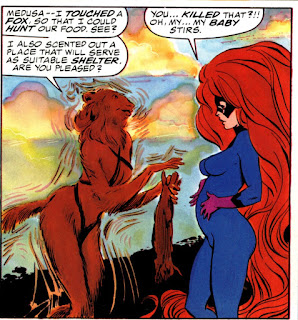Book Review: 'Sword of the Nurlingas' by Gerald Earl Bailey
4 / 5 Stars
‘Sword of the Nurlingas’ (180 pp.) was published by Berkley Books in January 1979. The cover artist is uncredited, but likely Wayne Barlowe.
This is the first volume in the two-volume ‘Saga of Thorgrim’ series, with ‘Sword of Poyana’, also published in 1979, the second volume. Whether the series was intended to feature additional volumes is uncertain, as these two books are the totality of author Bailey's output.
‘Sword of the Nurlingas’ is set in the province of Bod Dagh, which is modeled on medieval Scandinavia. Our hero, the son of King Thorgill, is serving a stint as foster-son to an elderly couple at the farmstead of Gilistead. Preoccupied with learning the skills of a warrior, Thorgrim largely is sheltered from the political intrigue unfolding in Bodo Dagh, intrigue advanced by the increasing ambitions of Jomunrek, the illegitimate son of Thorgill.
As the novel opens a witch-woman in Gilistead awakes with an alarming vision of fire and violence, a vision that portends a cruel fate for our hero should he be found by the forces of Jomunrek. Gisli, the bailiff of Gilistead, arranges for Thorgrim to flee to the city of Chiavo, where he can find passage to the Eastern Lands and a degree of safety as a future as a member of the royal guardsmen of Bayan.
Gisli bestows upon Thorgrim the magic sword of Lark, and the story of a prophecy…..one that may involve Thorgrim and the Spaehelm, a lost artifact of great power, albeit one that brings a curse upon its wielder.
And so Thorgrim, callow as he is, is forced out into the wide world, with all its perils and promises. But with Lark in his hand, Thorgrim is not one to be underestimated, as his enemies soon will learn…..
‘Sword of the Nurlingas’ was something of a surprise. It’s a cut above the standard-issue Conan pastiche, as good as, if not better, than (for example) the ‘Thongor’ stories produced by Lin Carter.
Bailey is a competent writer who keeps his chapters short and to the point. The cast of characters is expansive, but not unwieldy, and the narrative moves with alacrity. For his part, Thorgrim is not invincible, thus victory is never foreordained. At the same time, his willingness to use strategy and cunning when the odds are against him keeps the plot from getting too predictable and sustains an interesting narrative.
I finished ‘Sword of the Nurlingas’ with an eye towards acquiring the sequel. This is a late 70s sword-and-sorcery tale that is worth picking up.














































































